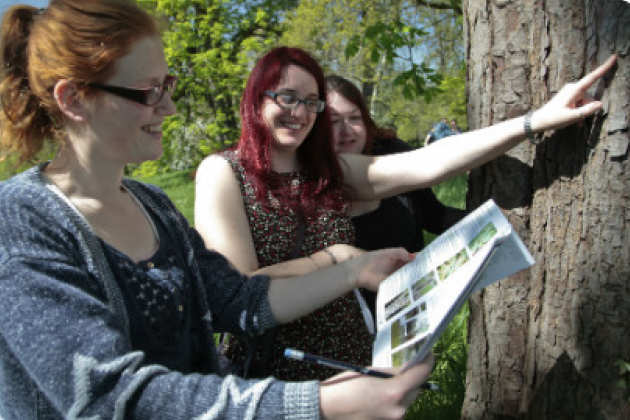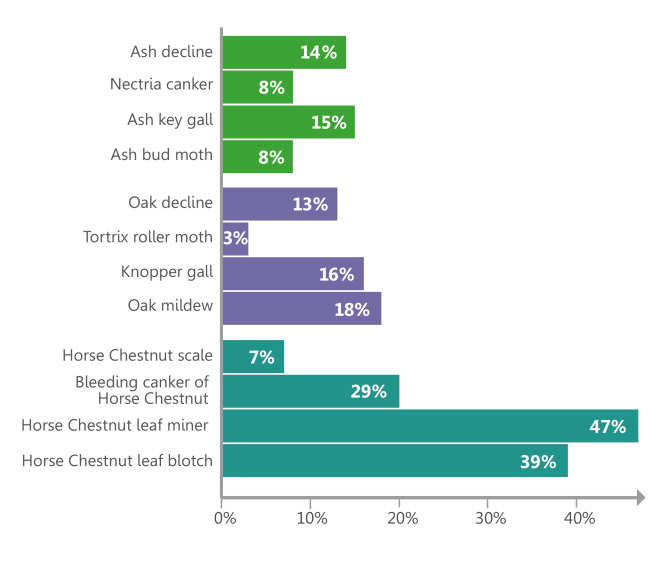 The OPAL Tree Health Survey was developed in direct response to the UK Government’s growing concerns about the pests and diseases threatening the country’s trees and woodlands, and addressed the Government’s objectives to raise public awareness of tree health and empower people to work with officials to monitor trees. The survey was designed by people from a wide consortium of government, conservation and academic organisations. Its launch in May 2013 was timed perfectly to harness public interest following the first finding of Chalara ash dieback in the UK the previous autumn.
The OPAL Tree Health Survey was developed in direct response to the UK Government’s growing concerns about the pests and diseases threatening the country’s trees and woodlands, and addressed the Government’s objectives to raise public awareness of tree health and empower people to work with officials to monitor trees. The survey was designed by people from a wide consortium of government, conservation and academic organisations. Its launch in May 2013 was timed perfectly to harness public interest following the first finding of Chalara ash dieback in the UK the previous autumn.
The survey consists of three activities:
- Identifying and assessing general tree characteristics
- Recording the presence of pests and diseases on Oak, Ash and Horse Chestnut trees
- Recording the presence of six of the most serious pest and disease threats, “The Most Unwanted”, and reporting them to officials
For the latest information on tree pests and diseases, please consult the DEFRA portal.
Survey Resources
Welsh Language Versions
Additional Resources
Survey Results

Over 2,800 survey responses (containing observations of more than 4,500 trees) have been submitted via the OPAL website. Figure 1 (right) shows the percentages of surveyed Oak, Ash and Horse Chestnut trees on which 12 tree pests and diseases were observed. As clear in Figure 1, these results suggest that Horse Chestnut was the least healthy tree species, with Horse Chesnut leaf miner as the most recorded pest and disease (these observations include four unconfirmed sightings as far north as the Central belt of Scotland - the leaf miner moth has been spreading north in the UK at around 40-60 km a year since it was first found in the London area in 2002).
Supporting Statutory Surveillance
The OPAL Tree Health Survey has made great progress in meeting the Government’s objectives to raise public awareness:
- Over 1,500 people including over 700 school teachers have been trained in the survey
- Over 4,000 people have conducted a survey, often in groups and with family and friends.
- Over 25,000 tree identification guides have been downloaded from the OPAL website – making it OPAL’s most downloaded resource.
"The OPAL Tree Health Survey helped individuals to actively engage in support of wider government policy, in this case, safeguarding plant health"
Sir Bob Kerslake, Head of the Civil Service, commenting when presenting the OPAL Tree Health Survey with the DEFRA Civil Service Reform Award for 2013/14
People have supported official surveillance by reporting suspect sightings of ‘The Most Unwanted’ to the Forestry Commission’s official recording site ‘Tree Alert’. There has been one false alarm of emerald ash borer (which turned out to be a green dock beetle) and two of the first findings of Chalara ash dieback in the official government distribution map were made initially by people doing the OPAL Tree Health Survey.




